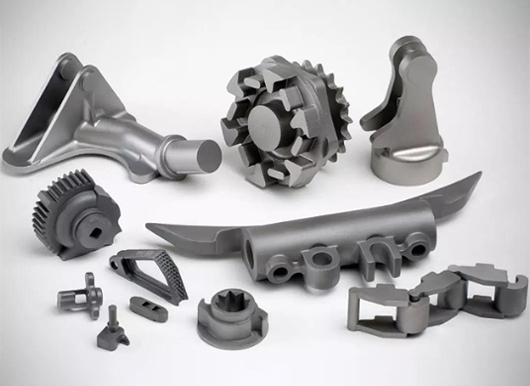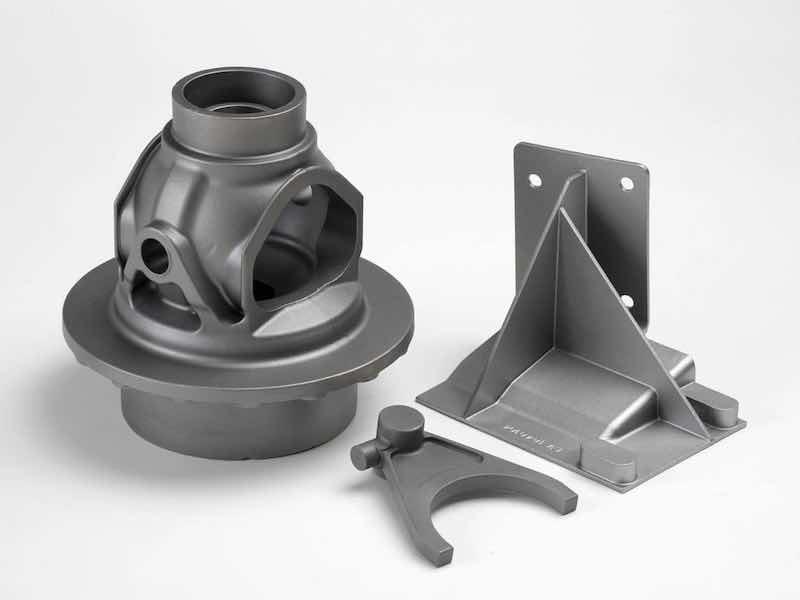The Numerous Uses Aluminum Castings: A Comprehensive Overview for Market Professionals
Light weight aluminum spreadings play an essential role across various industries, thanks to their one-of-a-kind buildings. These sturdy and light-weight elements are essential in vehicle and aerospace applications. Understanding their advantages and the production procedures entailed can substantially influence performance and effectiveness. As technology breakthroughs, brand-new advancements remain to emerge. Sector specialists have to take into consideration these variables to make enlightened options. The implications of these growths deserve checking out further.
Benefits of Aluminum Castings in Numerous Industries
Light weight aluminum castings provide many advantages throughout different markets, making them a recommended selection for lots of applications. Among the key benefits is their light-weight nature, which adds to total energy effectiveness in transport and machinery. This minimized weight additionally boosts ease of taking care of and setup, leading to lower labor expenses.
Light weight aluminum castings display superb corrosion resistance, prolonging the life-span of components in extreme settings. Their electrical and thermal conductivity permits effective heat dissipation and efficient electric applications.
In addition, aluminum can be quickly alloyed and adjusted, making it possible for the development of complex shapes and layouts that meet specific design requirements. This adaptability supports development in markets such as auto, aerospace, and customer items.
The recyclability of light weight aluminum straightens with lasting techniques, making it an eco friendly choice for modern-day production. On the whole, the advantages of light weight aluminum castings position them as important materials in different industries.
Secret Manufacturing Processes for Aluminum Castings
A variety of making processes are utilized to produce aluminum spreadings, each tailored to meet specific application requirements and production volumes. Amongst one of the most common approaches are sand casting, pass away casting, and investment spreading.

Financial investment spreading, likewise known as lost-wax spreading, offers outstanding surface coatings and elaborate details, often used for smaller sized, accuracy components. In addition, gravity casting utilizes the force of gravity to load molds, ideal for larger castings where precision is less vital. Each process has its benefits, catering to varied industrial needs while making the most of efficiency and quality in light weight aluminum spreading production.
Applications of Aluminum Castings in Automotive and Aerospace
In many applications within the aerospace and automotive markets, aluminum spreadings play a crucial function due to their light-weight buildings and excellent strength-to-weight proportion. In the automotive market, parts such as engine blocks, transmission instances, and wheel rims are often generated making use of aluminum castings. These components gain from reduced weight, bring about boosted fuel effectiveness and enhanced efficiency.
In aerospace, light weight aluminum castings are crucial for structural elements, consisting of airplane frames, landing gear, and engine real estates. The product's resistance to deterioration and capacity to withstand heats make it optimal additional resources for these demanding applications. In addition, light weight aluminum spreadings help with complicated geometries, making it possible for the layout of intricate components that add to total airplane effectiveness.
Technologies and Improvements in Aluminum Casting Innovation
As industries proceed to advance, technologies in aluminum casting technology are driving considerable improvements in efficiency and performance. Advanced methods such as 3D printing and casting simulation software application have changed traditional practices, allowing for a lot more precise layouts and lowered waste. These modern technologies make it possible for manufacturers to create intricate geometries that were formerly unattainable, improving the versatility of light weight aluminum spreadings.
In addition, the development of brand-new alloy make-ups and treatment methods has enhanced mechanical properties, making spreadings lighter yet more powerful. Automated procedures are likewise being integrated, minimizing human error and raising manufacturing speed.

Ideal Practices for Making Use Of and choosing Light weight aluminum Castings
When choosing and using aluminum spreadings, cautious consideration of details criteria can significantly impact the final product's efficiency and long life. Market professionals should assess the particular application requirements, including load-bearing abilities, rust resistance, and thermal conductivity. Picking the suitable alloy is crucial, as various alloys use varying characteristics and toughness.
Additionally, comprehending the spreading process-- whether sand spreading, die casting, or investment spreading-- will certainly influence the end product's top quality and cost-effectiveness. Quality control measures, such as non-destructive testing and dimensional evaluations, are necessary to ensure that the castings satisfy industry requirements.
In addition, proper handling and storage of light weight aluminum spreadings Get the facts can prevent damage, guaranteeing peak performance. Ultimately, collaborating with credible vendors that focus on top quality control can enhance the dependability of the finished elements. By sticking to these finest methods, market experts can maximize the advantages of light weight aluminum spreadings in their applications.
Regularly Asked Concerns
What Are the Environmental Influences of Aluminum Spreading Manufacturing?
Aluminum spreading production can bring about considerable ecological effects, consisting of greenhouse gas emissions, power usage, and source depletion. Additionally, inappropriate waste monitoring might lead to soil and water contamination, impacting neighborhood ecological communities and areas.
Exactly How Do Light Weight Aluminum Castings Compare to Other Steel Castings?
Light weight aluminum spreadings are lighter and corrosion-resistant compared to various other metal spreadings like iron or steel. They use premium thermal and electric More Info conductivity, making them suitable for applications where weight and longevity are essential aspects.
What Is the Cost Distinction Between Aluminum and Various Other Products?
The expense of aluminum castings typically varies from modest to high, often a lot more affordable than stainless steel yet pricier than some plastic alternatives. Aluminum Foundry. Elements such as production material, complexity, and quantity specs significantly affect overall prices
Can Light Weight Aluminum Castings Be Reused?
Light weight aluminum spreadings can certainly be reused. This procedure substantially reduces power intake and ecological influence contrasted to creating brand-new light weight aluminum, making reusing a crucial method in advertising sustainability and source preservation within different sectors.
What Safety Steps Should Be Taken During Aluminum Casting Processes?
During aluminum spreading procedures, necessary precaution consist of using safety equipment, making certain appropriate ventilation, utilizing heat-resistant devices, preserving equipment, and following safety protocols to stop exposure to hazardous materials and reduce the risk of crashes. (Aluminum Castings)
Sand spreading entails developing a mold and mildew from sand, permitting for big castings and complicated forms. Investment casting, additionally understood as lost-wax spreading, provides extraordinary surface coatings and elaborate details, usually used for smaller sized, precision parts. Furthermore, gravity casting utilizes the pressure of gravity to load molds, suitable for bigger castings where accuracy is less vital. Additionally, recognizing the casting procedure-- whether sand spreading, pass away casting, or financial investment spreading-- will affect the final item's high quality and cost-effectiveness. Aluminum castings are lighter and corrosion-resistant compared to other metal spreadings like iron or steel.